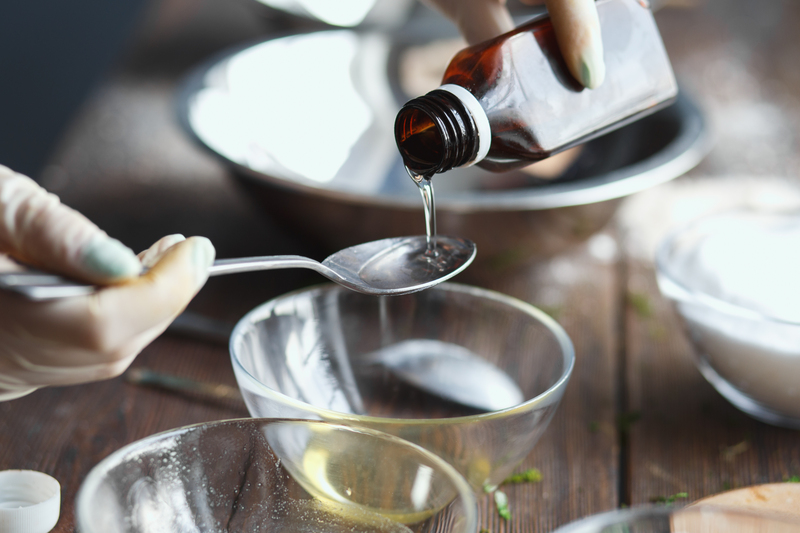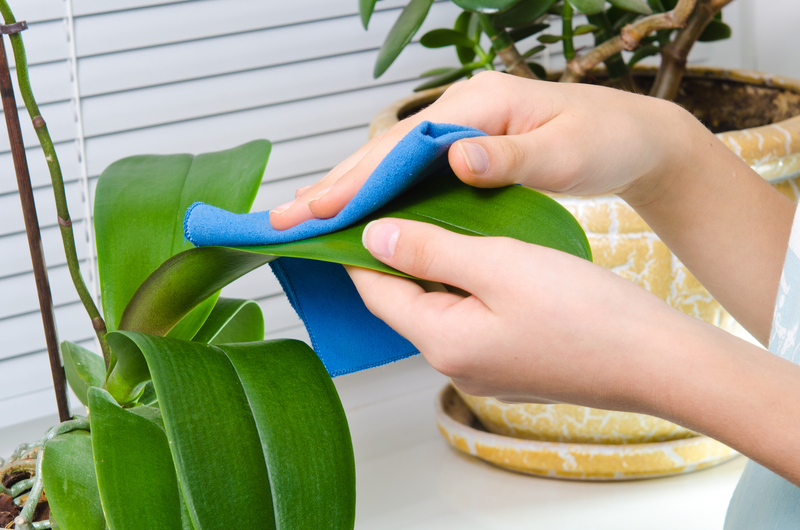Velvet Curtain Care 101: How to Wash and Maintain Their Beauty
Posted on 22/05/2025
Velvet Curtain Care 101: How to Wash and Maintain Their Beauty
Velvet curtains add undeniable elegance, warmth, and sophistication to any space. Their plush texture and rich hues create a sense of luxe comfort, but to preserve their beauty and ensure exceptional longevity, it's essential to understand how to care for velvet drapery.
In this comprehensive guide, you'll learn everything you need to know about velvet curtain care: from the best techniques for washing velvet curtains, to daily maintenance and storage tips. Whether you have luxurious crushed velvet drapes, classic cotton velvet or modern synthetic velvet panels, this article will arm you with all the information you need to maintain their stunning appearance for years to come.
Understanding Velvet Curtains: Types and Characteristics
Before delving into velvet curtain cleaning, it's crucial to identify the type of velvet you own, as this affects the maintenance approach.
Common Types of Velvet Used for Curtains
- Silk Velvet: The epitome of luxury, but delicate and often requires professional care.
- Cotton Velvet: Durable, moderately soft, and easier to maintain than silk.
- Synthetic Velvet: Often made from polyester or microfiber; resilient, color-fast, and typically more affordable.
- Crushed Velvet: Characterized by a textured, shiny finish, with less visible marks from handling.
- Embossed Velvet: Features decorative patterns pressed into the pile.
Pro tip: Always check the manufacturer's label for fiber content and care instructions before cleaning your velvet window panels.

Why Is Special Care Required for Velvet Curtains?
The unique pile of velvet - that soft, dense surface of evenly cut fibers - is what gives it its signature appearance and touch. However, this plush pile also makes velvet drapery more susceptible to crushing, matting, water spots, and dust than other materials.
The main reasons why velvet curtain care matters:- Preservation of Pile: Improper cleaning can flatten or damage the velvet's surface.
- Color Retention: Velvet can fade if cleaned with harsh chemicals or overexposed to sunlight.
- Stain Vulnerability: Liquids quickly penetrate the pile, making prompt attention vital.
- Shape Integrity: Incorrect washing or drying can distort curtain shape.
Basic Maintenance: Keeping Velvet Curtains Looking Fresh
Before you even consider deep washing velvet curtains, regular maintenance can go a long way in preserving their beauty. Follow these simple steps to keep your velvet curtains looking their best:
1. Regular Dusting and Vacuuming
- Use a soft-bristled brush or the upholstery attachment on your vacuum cleaner to gently remove dust and debris.
- Brush or vacuum in the direction of the nap (the way the pile naturally lays).
- Frequent cleaning (once every 2-4 weeks) prevents dust buildup and matting.
2. Avoid Direct Sunlight
- Prolonged exposure to sun can cause fading. Use sheers or blinds behind velvet curtains to minimize sunlight.
- If possible, rotate your curtains every few months for even wear and exposure.
3. Address Spills Quickly
- Never rub a liquid spill!
- Instead, gently blot with a clean, absorbent cloth to soak up as much liquid as possible.
- Avoid excessive moisture.
4. Fluff and Steam
- To revive flattened areas, gently shake the curtains or use a clothing steamer at a safe distance.
- Always steam from the back and never press the steamer directly onto the velvet.
How to Wash Velvet Curtains: Handwashing, Machine Washing & FAQ
Proper washing is a key component of velvet curtain care. Not all velvet window treatments are created equal, and not all can be safely machine washed. Here's a detailed breakdown of your options.
Should You Wash Velvet Curtains at Home?
The answer depends on the fabric content. Always check the care label before starting. Silk or rayon velvet should only be dry cleaned, while polyester and performance velvet may be machine or hand washed if the label allows.
Handwashing Velvet Curtains
- Fill a basin or tub with cold or lukewarm water and add a small amount of gentle liquid detergent (look for one formulated for delicates).
- Submerge one curtain panel at a time.
- Gently agitate with your hands to loosen dirt, do not wring or rub the fabric.
- Let the curtain soak for 5-10 minutes, then rinse thoroughly in cool water until detergent is removed.
- Support the wet curtain fully as you lift it; avoid letting it drag or stretch.
- Press out excess water gently by rolling the curtain in a dry towel. Never twist or wring velvet fabric.
Machine Washing Velvet Curtains
- If the care label says your curtains are machine washable, wash only one or two panels at a time and use a mesh laundry bag.
- Set your machine on the gentle or delicate cycle with cold water.
- Use a mild, liquid detergent with no bleach or fabric softener.
- Once done, remove the curtains promptly to prevent creasing.
Important: Never mix velvet with other fabrics in the wash - the pile can attract lint and suffer abrasion.
Dry Cleaning Velvet Curtains
- For silk, high-end, or vintage velvet curtains, always choose professional dry cleaning.
- Spot clean small stains at home with extreme care, but leave full cleaning to the pros to avoid damage.
Drying and Ironing Velvet Curtains
Proper drying is crucial for keeping your velvet drapes looking lush and avoiding wrinkles, crushing or warping.
How to Dry Velvet Curtains
- Never use a tumble dryer: The heat and motion can destroy the pile and cause shrinking.
- Lay the curtains flat on a clean, dry towel. Reshape as needed to avoid stretching.
- Alternatively, hang the curtains to air dry on a padded rod or over a shower bar, ensuring the fabric is spread evenly to prevent creases.
- Keep out of direct sunlight to prevent fading.
- For very heavy or long panels, allow extra drying time to avoid mildew.
Can You Iron Velvet Curtains?
- Do not iron directly on velvet! This can crush the pile and leave shine marks.
- To remove creases or wrinkles, use a handheld steamer or the steam setting on your iron, keeping a safe inch or two away from the fabric.
- Steam gently, working from the back of the curtain and always in the direction of the nap.
Stain Removal Tips for Velvet Curtains
Stains on velvet need special attention. The wrong approach can worsen the mark or damage the pile. Here's how to tackle common stains:
- Liquid Spills: Blot immediately with a clean, dry cloth. If necessary, use a small amount of water or a mixture of water and mild detergent on another cloth. Dab (don't rub) from the outside in, then blot with a dry towel.
- Grease or Oil: Sprinkle with cornstarch or baby powder to absorb the oil. Let rest, then gently brush away and treat with a dry-cleaning solvent if the care label allows.
- General Dirt: Use a soft-bristled brush or a vacuum with an upholstery nozzle to loosen the debris, followed by spot cleaning if needed.
Tip: Always spot test any cleaning solution on a hidden area first.
How to Maintain the Beauty of Velvet Curtains
Beyond basic cleaning, consider these best practices to ensure your velvet window treatments remain a showstopper in your home.
1. Fluff and Groom Regularly
- Keep the pile looking plush by gently shaking out your curtains or using a soft brush in the direction of the nap.
- For stubborn flattened spots, use brief, indirect steaming (without getting the curtain wet).
2. Protect from Abrasion
- Avoid placing furniture too close to the curtains to minimize rubbing and wear.
- Be mindful of pets and children who may handle the curtains roughly.
3. Rotate Curtains Periodically
- If possible, swap the left and right panels every six months for even exposure to light and air flow.
- This prevents one side from wearing or fading faster than the other.
4. Store Velvet Curtains Correctly
- When not in use, store in a breathable cotton bag in a cool, dry space.
- Never store velvet curtains in plastic bags, which can trap moisture and cause mildew.
- Roll rather than fold to avoid hard creases.
Troubleshooting and Damage Repair
Despite your best efforts, accidents can happen:
- Crushed Pile: Try steaming from the back, or use a velvet brush to gently lift the nap.
- Persistent Odors: Hang your curtains outdoors in the shade for a day. For deep odors, consult a professional cleaner.
- Stubborn Stains: Seek out a reputable dry cleaner who specializes in fine fabrics.

Frequently Asked Questions: Velvet Curtain Care
- How often should I clean velvet curtains? - Lightly dust and vacuum every 2-4 weeks, deep clean once or twice a year or as needed.
- Can I wash velvet blackout curtains? - Check the manufacturer label: many blackout linings are not machine washable. When in doubt, dry clean.
- How to prevent watermarks on velvet? - Never soak velvet. Always blot spills quickly and avoid wet cleaning unless absolutely necessary.
- Can I use regular detergent on velvet? - Use only gentle, liquid detergents. Powder detergent can leave residue and stiffen the pile.
Conclusion: Velvet Curtain Cleaning Doesn't Have to Be Scary!
Velvet curtain care may require a bit more attention than standard curtain fabrics, but the result is well worth the effort. By following these essential tips on how to wash velvet curtains, maintain their texture and color, and store them safely, you'll be able to preserve the sumptuous look and luxurious feel of your velvet drapes for years to come.
Remember, consult your specific care labels, be gentle, and when in doubt, entrust expensive or vintage pieces to professional dry cleaners. With proper care, your velvet curtains will remain a stunning focal point in your home - lush, beautiful, and always in style.
Ready to show off your beautiful velvet drapery? With these simple steps, you can enjoy the elegance and comfort of velvet without the stress. Happy decorating!




